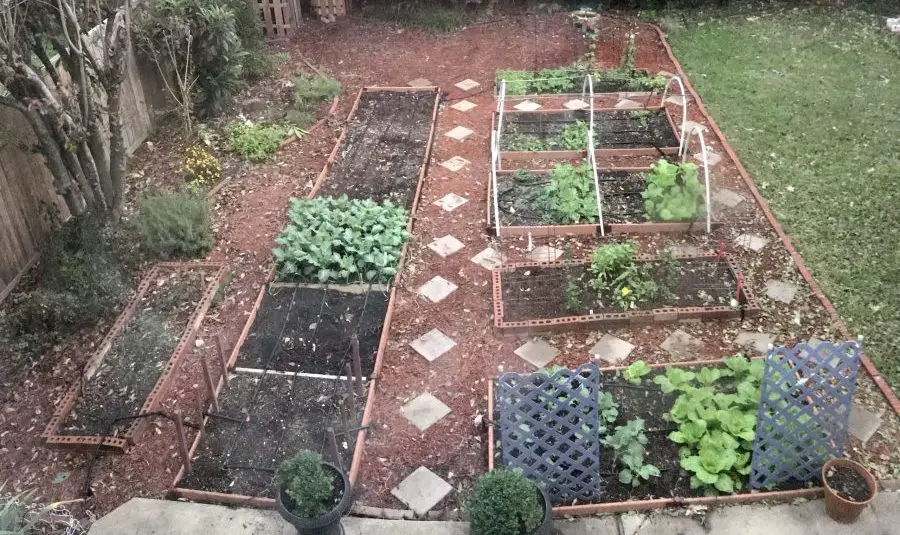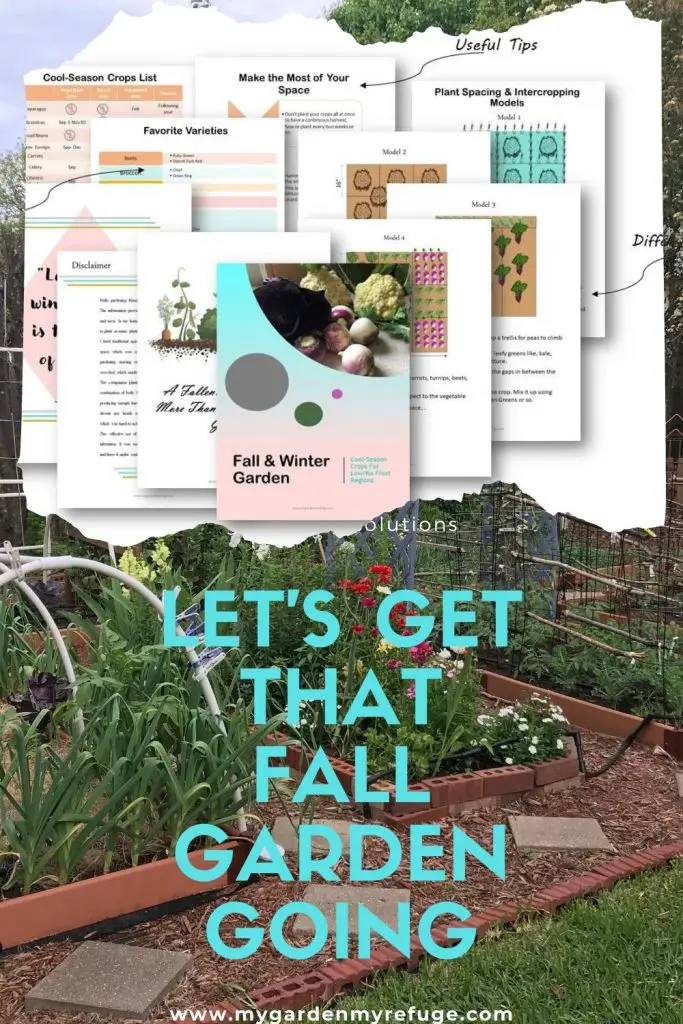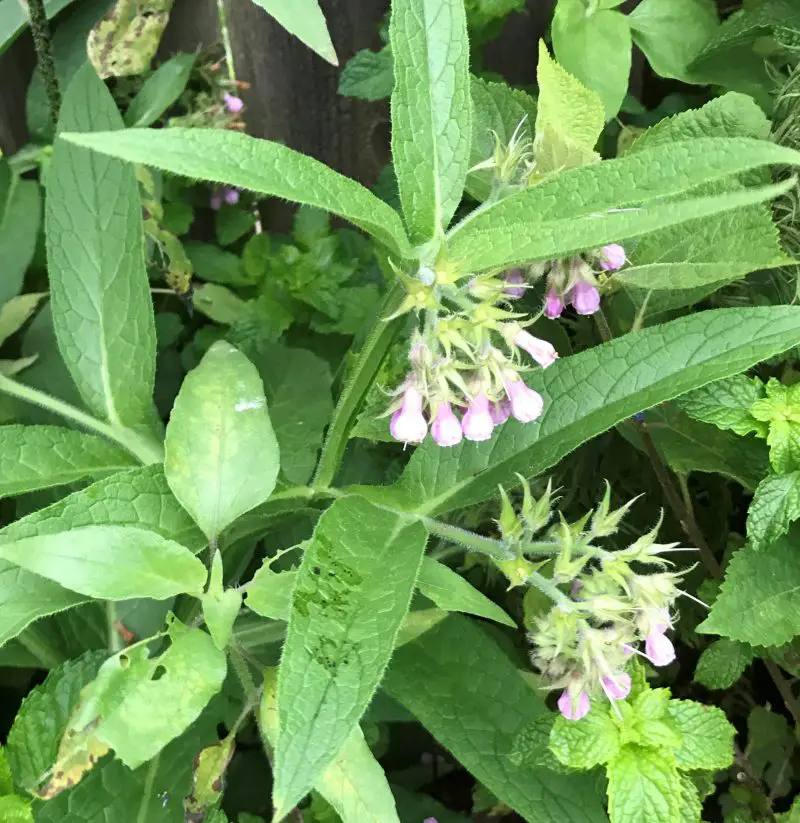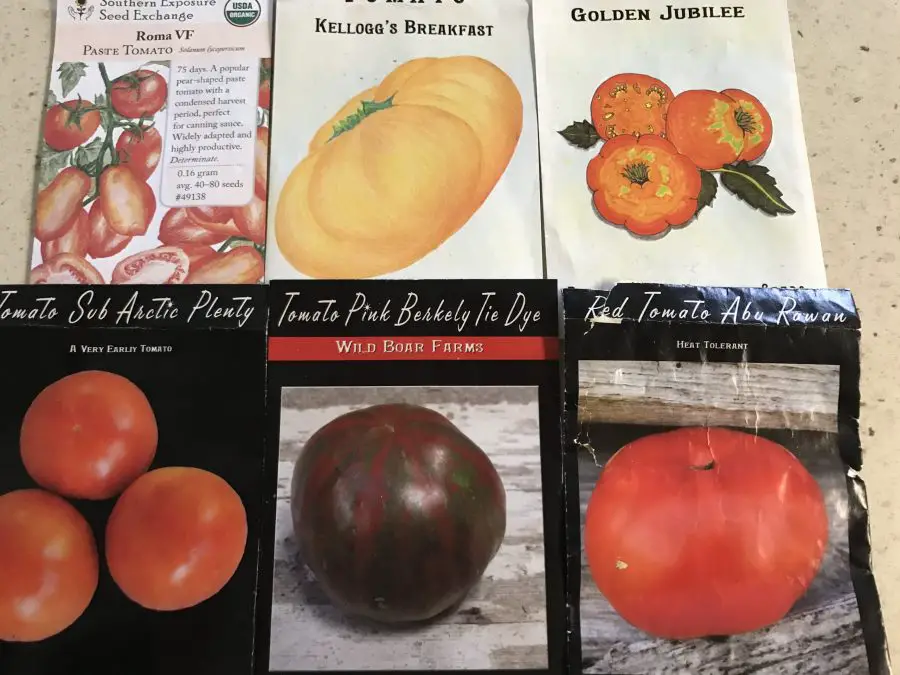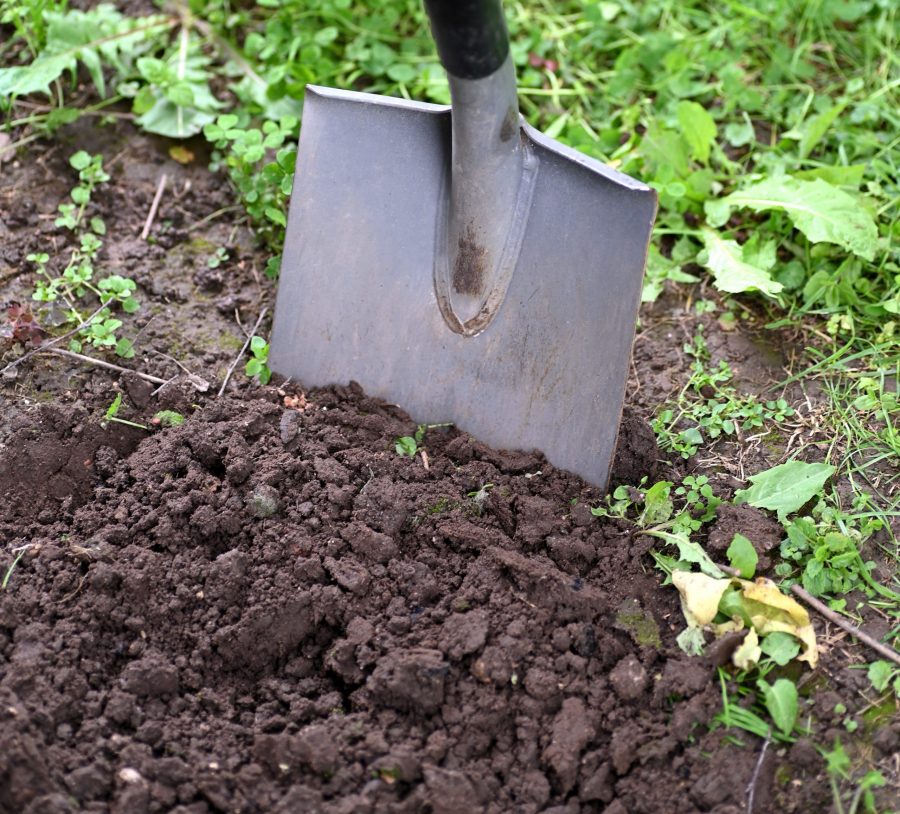What is a Cool Season?
The cool season begins when the daytime temperatures come to 75F (24C) and night temperatures 60F (15C) or less. In other words, it starts in fall and extends till early Spring, ending with the last frost date.
While the calendar shows that the beginning of Fall is September 21, each geographical region has a different natural starting date. For example, the cool season starts in early September in the north, while summers can stretch till December in the south.
For gardeners, it is best to look up the growing zone, which determines the first and last frost dates. Approximately, the cool growing season starts eight to six weeks before the first frost and ends with the later frost date.
Click here to find your zone in the USA.
Cool-season gardening
After a busy summer, Northern gardeners put their gardens to bed for winter hibernation. In the south, gardeners gear up for their best growing season yet. The cool temperatures and more rain bring back life to the garden.
In Central Texas, the warm-season garden overlaps with the cool-season garden. The average first frost date is December 6, allowing enough time for the second round of tomatoes, peppers, eggplants, cucumbers, and bean harvest starting in September. However, while those crops have a second chance to thrive, it is time to start cool-season seeds indoors.
What are cool-season Vegetables?
You might be surprised at how many vegetables you can grow in the cool-season garden.
- Root vegetables: beets, carrots, turnips, radishes, and potatoes.
- Heading vegetables: broccoli, cabbage, cauliflower, and Choy.
- Leafy vegetables: mustard greens, Asian greens, kale, lettuce, spinach, and swiss chard.
- Herbs: celery, parsley, cilantro, and dill.
- Alliums: onions, garlic, spring onions, chives, shallots, and leeks.
- Other: Fava beans (broad beans), artichokes, fennel, peas, and asparagus.
How to prepare for a Fall/winter garden?
Clean up
Keep the garden clean by eliminating any diseased or pest-infected plants from the summer garden by throwing them in the trash rather than the compost pile.
Replenish
Most summer crops are heavy feeders, so the soil is depleted from many nutrients at the end of the season. Add compost or well-rotted manure and work into the ground. Give a week or so to settle and cool down before planting.
Loosen soil
Soil settles and gets compacted through time. Lightly till the growing areas enough to aerate it and loosen it up. No need to use a tiller for this. A light tease with a garden fork will do the job.
Mulch
If you mulched the growing bed in the summer, it is an excellent time to renew it or add to it.
Be prepared
- It is the best time to build structures such as trellises, hoop house frames, or cold frames.
- Have shade cloth ready to protect your new plants if the hot weather lingers.
- Prepare your barrels for harvesting rainwater.
- Have a floating row cover on hand for those sudden frosty nights.
- Keep an eye on pests, some warm-weather bugs might still be lurking around, and they might cause severe damage to the small plants.
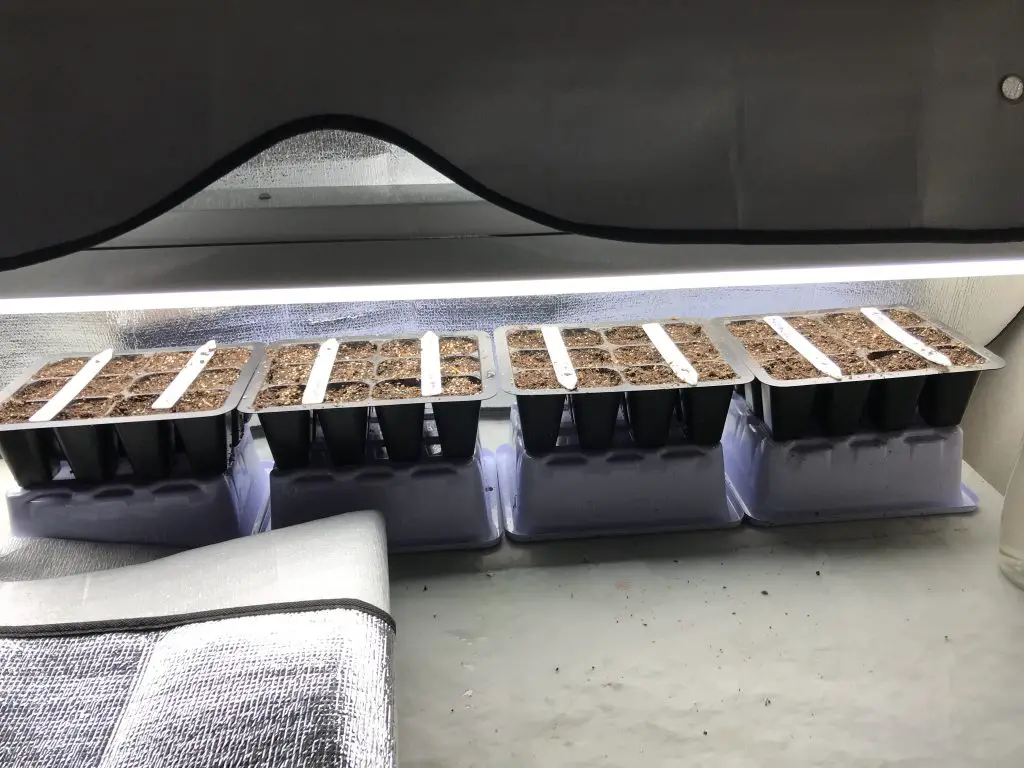
When to start seeds in the cold weather?
The common practice is to start seeds six to eight weeks before the first frost. However, in Central Texas, September is the best time to have transplants ready for planting by the end of October. You have less risk of heat stress at this time, which can hinder your cold season crops’ growth.
Start the seeds indoors under grow-light or in a bright sunny window. Of course, you can also have them in a shady spot outdoors, where they only get early morning sun. But having them indoors has better results than outdoors.
Here is a list of plants you can start from seeds in September in Central Texas and any mild winter region:
- Cauliflower
- Cabbage (all kinds)
- Cilantro ( better to direct sow)
- Broccoli
- Beets
- Fennel
- Greens (Asian, Chard, kale, turnip, spinach)
- Leeks
- Head Lettuce
- Parsley (better to direct sow)
- Turnips
Start seeds in batches to ensure continuous production, spacing them two to three weeks apart.
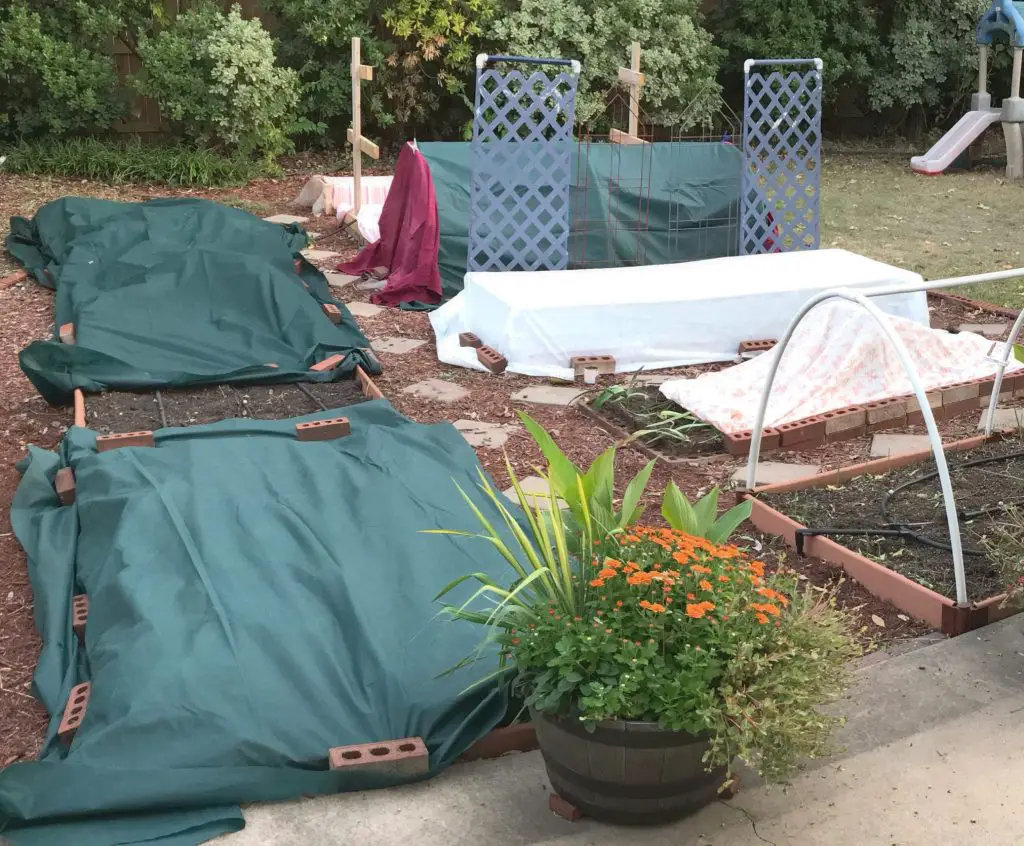
What is the difference between frost and freeze?
A frost is a sparkling layer we get on surfaces in cold weather. Cold air holds less water than warm air, so when humidity approaches 100%, condensation occurs in the form of frost. And temperature does not have to be at a freezing point for frost to happen.
When air temperatures drop below 32F (0C), that’s called freezing. And most of the time, we get a freeze with no frost. There are three types of freeze:
- Light freeze in which temperatures are between 32G-29F ( 0C, -2C). This kind of freeze kills only tender plants.
- Hard freeze where temperatures reach 28F- 25F (-3C, -5C). This one can damage a wide variety of crops.
- Severe freeze has temperatures below 24F (-4C), which can damage vegetation.
What crops survive frost?
The majority of cool-season vegetables can survive a frost and light freeze. It might cause discoloration on lettuce, parsley, and cilantro, but that’s about it. They recover to their normal state as soon as the sunshine hits them. Brassicas, which is cauliflower and family, take frost very well. They even develop a better taste after a frost or light freeze.
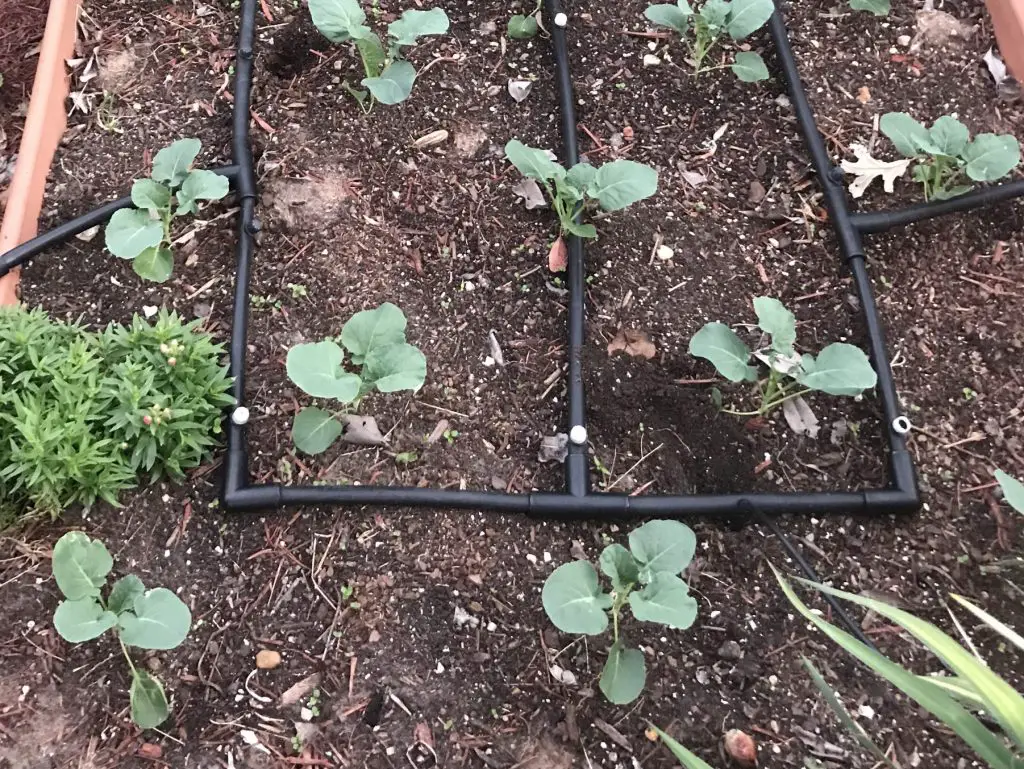
How to protect growing vegetables during a freeze?
Protecting the garden during a freeze is as simple as laying an old bed sheet or a fleece on the plants. Here are some valuable tips for adequate protection:
- Put down the cover before the wind picks up for an easier job.
- Use fabric or specialty row cover instead of plastic. The latter may cause leaf burn and damage the plants.
- It is best if the cover does not touch the plants to prevent frost burn. Make hoops to create tunnels as support.
- Use heavy-duty clamps and rocks to hold the material in place.
- Keep the frost cloth on as long as the freeze lasts. Don’t worry about sunlight not getting to the plants.
- Water your plants thoroughly if it hasn’t rained to create a protective shield for the root system. Frozen dry soil can cause the roots to freeze.
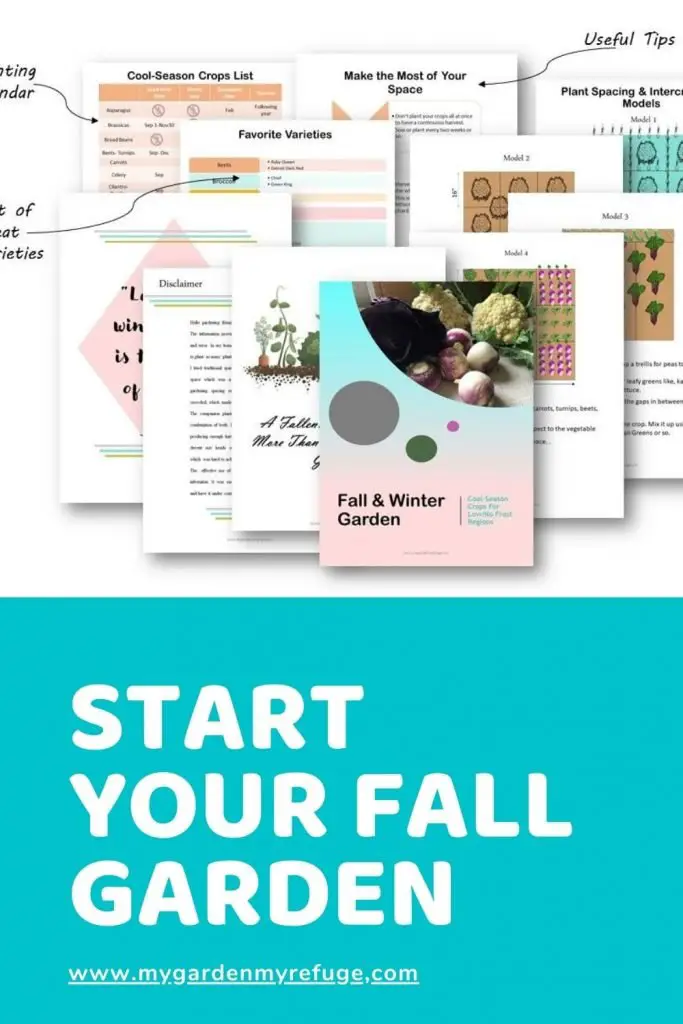
How to deal with pests in fall and winter?
Fortunately, there are not as many pests to deal with in the cold season. However, some of the bugs are leftover from the previous season, so cleaning the garden is essential.
Aphids
They are tiny green or black insects that suck on the leaf sap. They thrive in the hot weather but can devastate your fall garden if the temperatures are still warm.
Stay on top of them by regular inspection under the leaves and the new growth. Apply a strong jet of water to wash them off. In an infestation, use an organic oil-based bug spray such as neem oil or peppermint oil spray. Treat the infected area every two days to get rid of them.
The good news is that they do disappear when temperatures drop considerably, to only show up later in the Spring.
Mealy Bugs
Like aphids, mealybugs linger in the garden as long as the weather is warm. They are small white fuzzy insects that feed on the new growth and form a sticky cottony blanket over the plant. Try to control them as soon as you notice them before they cause significant damage.
Dip a cotton swab in rubbing alcohol and use it to wipe the mealybugs off of the plants. If too many of them exist, make a solution of one-quart water, one cup of rubbing alcohol, and a few drops of liquid soap. Spray this formula over the infested plants twice a week until you get rid of them.
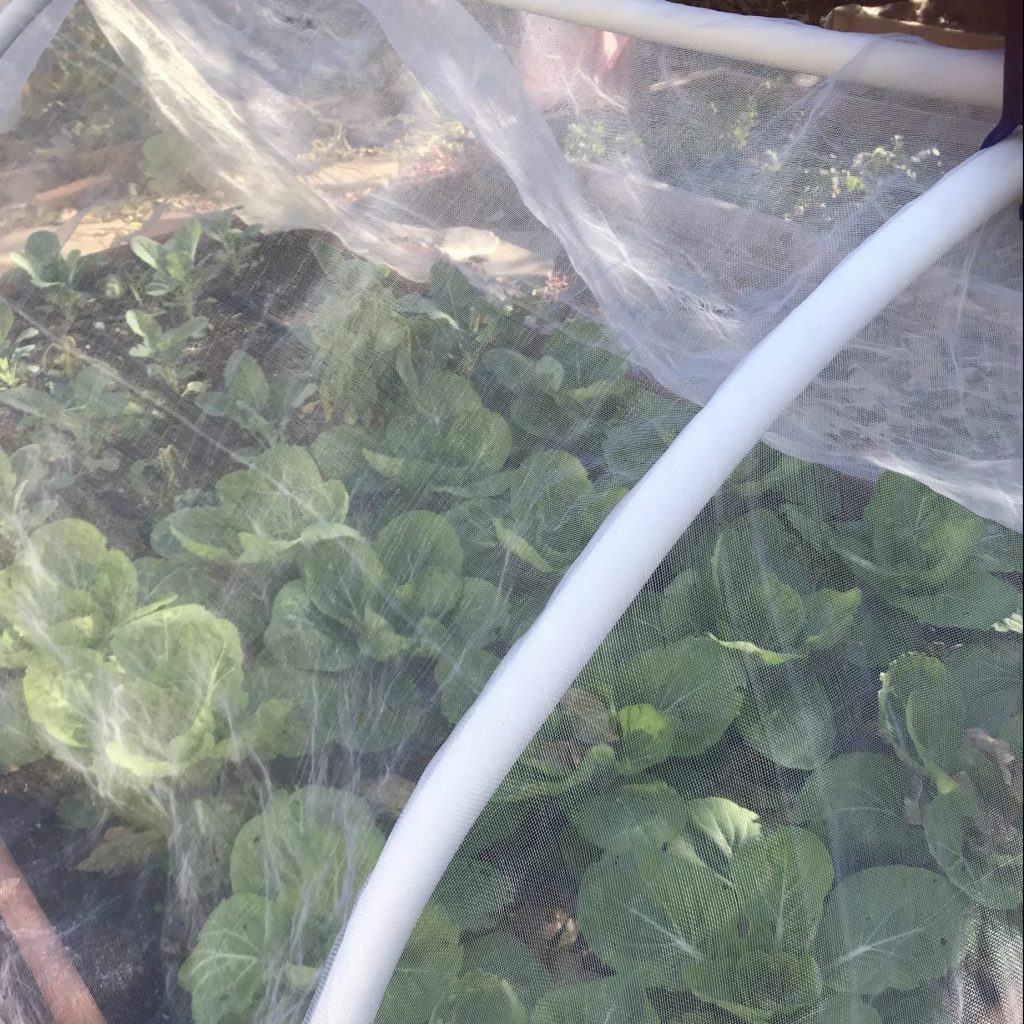
Cabbage loopers
These green worms are the larvae of the white moth. They feed on the brassica leaves, which they can strip down overnight. Start monitoring them by checking under the leaves as soon as you put your crops in the ground. Handpick them if the infestation is not so bad.
You can use a physical barrier, such as a mesh cover. The holes are small enough to block the white moth from laying its eggs on the plants.
If the preventative steps don’t work, use an organic insecticide called BT or Thuricide. It is a bacterium-based product that kills the caterpillars when they digest it.
Snails and Slugs
Snails and slugs can devastate the cold-season garden, mainly during wet weather. They tend to leave a trail of dried slime on the leaves. Handpicking is the first step to controlling them.
Setting up traps is another way to catch them by filling a tuna can with any sweet fermented ( carbonated) drink, then sinking it in the ground near the problematic area. The edge of the can has to be at the soil level. The snails are attracted by the fermented sweet smell, drowning them in the happy pool.
The final solution is to use an organic snail killer. The product is called “Sluggo.” It comes in the form of granules made out of semolina and BT powder. Sprinkle some over the area, and watch the dramatic drop of the snail/slug population in a few days.
Pill Bugs
Pillbugs or rolly-pollies are among the decomposing creatures. Many think they only feed on dead material and do not harm new plants. But they do chew on the woody part of the broccoli and cauliflower stems. And when they are in considerable numbers, they can destroy the vegetable garden.
Sluggo Plus is the product that takes care of them. Like the Sluggo, which kills snails and slugs, Sluggo Plus kills the pill bugs. Sprinkle some around the vegetables to save them.
Cutworms
Cutworms live in the soil and feed on the stem of the vegetables. They chew on the stem base till they cut it off, hence the name. Wrap the stem with tin foil to create a barrier. You can also sprinkle some BT (Thuricide) powder around the plants to kill them.
Cool-season garden diseases
Fungi and nutrient deficiency are the leading causes of diseases during the cool-season garden. Prevention is the most effective way to deal with them.
- Make sure to clean the garden well from last season’s remains.
- Discard all sick plants and fruits in the trash.
- Add compost and organic fertilizer to replenish the soil.
- Practice crop rotation to discourage soil-borne diseases from spreading.
The most common diseases are:
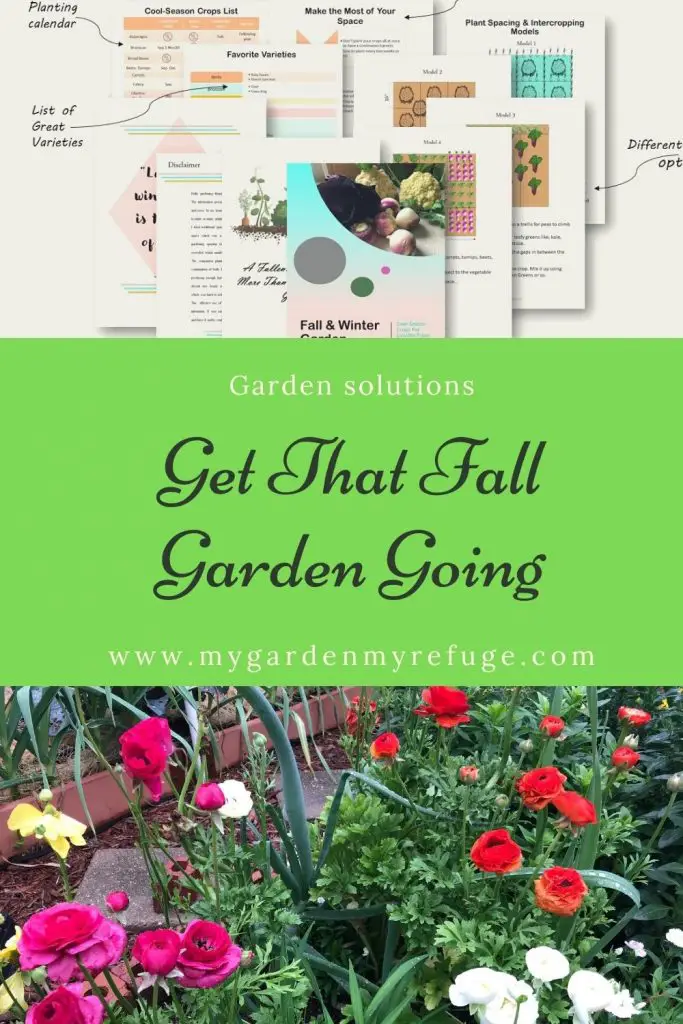
The hollow stem on broccoli
The hollowed stem of the broccoli is a physiological problem that causes the broccoli stem to be hollow. It is more of an aesthetic issue and does not affect the harvest. Planting disease-resistant varieties is the best practice to prevent it.
Click here to learn more about it.
Bean Rust
Rust is a fungal disease that shows brownish, reddish-colored spots on legume plants. Proper cultivation practices are crucial to having it under control. Plant disease-resistant varieties and remove infected leaves or pods as soon as you notice them. You may also use a copper-based fungicide for a treatment.
Blight
Blight is a fungal disease that attacks potatoes. Mild winters generally favor the spread of the spores. It manifests as yellow spots on the leaves that wither and turn brown fast. The fallen foliage contaminates the soil spreading the disease to the tubers under the ground.
- Discard the top of the plant or burn it.
- Harvest any potatoes with no sign of infection and get rid of the infected ones.
- Don’t keep the potatoes to plant the following season.
- Practice crop rotation and don’t plant potatoes in the same bed for at least three years.
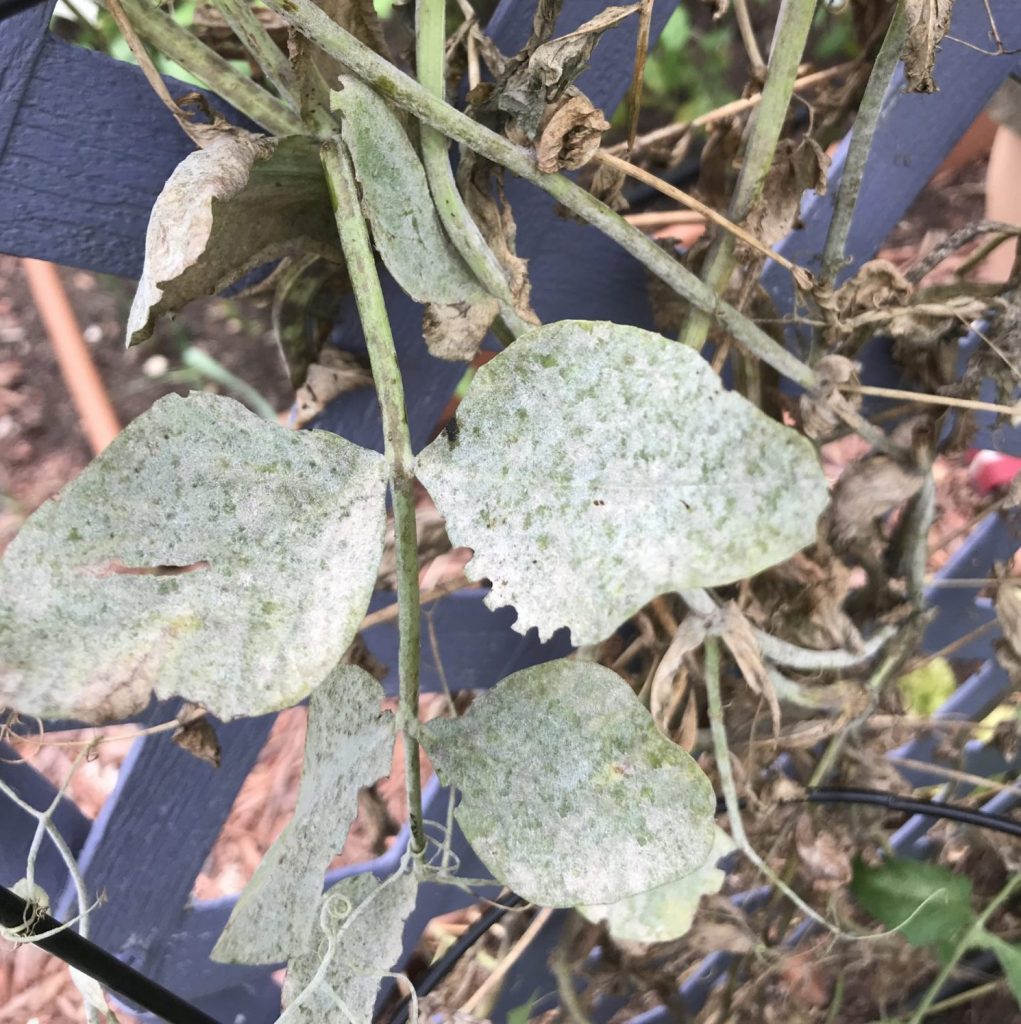
Powdery Mildew
Powdery Mildew is another fungal disease that occurs when the weather is humid and warm. It attacks peas mainly at the end of winter. There is no need for treatment since it comes at the end of the pea harvest. Discard the plant once production is over.
Adding the flowers
Adding flowers to the vegetable garden breaks the dominant green color, which can be boring to some. It also attracts various flying insects, making the winter garden lively.
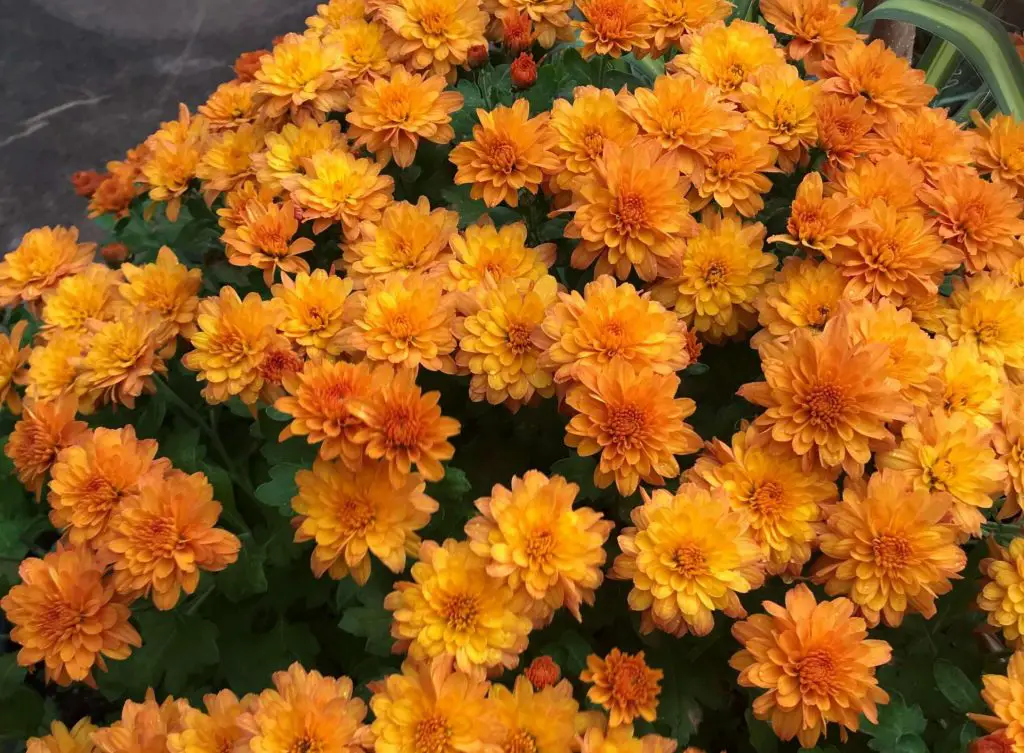
What flowers grow in the cool season?
Aster is a beautiful fall bloomer. It comes in different colors, such as blue, purple, pink, and white. It is desirable to bees and butterflies, and as a bonus, it is drought-resistant.
Chrysanthemum is a popular fall bloomer with breathtaking bronze, red, white, and yellow colors. It grows well in pots and flower beds. Tucking them between the cabbages adds interest to the cabbage patch. They last a while in our Southern garden and bloom several times in fall, mid-winter, then Spring.
Calendula is a beautiful multilayered petal flower. It comes in shades of orange and yellow, making them stand out in the garden. They bloom all season long, from fall through the end of Spring.
Pansies and violas are two very similar flowers. However, they make a better impact when planted in clusters at the borders.
Osteospermum, also known as African daisy, is a prolific mid-winter bloomer and looks excellent on borders. It also comes in various gradient colors white, yellow, purple, and orange.
Ranunculus or Persian buttercup is a rose-like flower. Plant the corms around October for the late winter and early spring show.
Snapdragon comes in two different types. Dwarf mounding snapdragons which bloom fall through Spring. Tall snapdragons that bloom from late winter to early summer.
Click here to learn more about winter blooms.
Be patient and enjoy the garden.
Don’t get discouraged if you missed protecting your garden or loopers destroyed a cauliflower plant. There is always a second chance in life. Gardening is all about patience and perseverance, after all.
